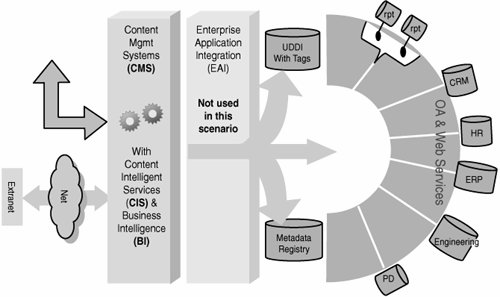BI Web Services in the Real World
| Given these interesting capabilities of a web services SDK, how are Business Objects customers actually using it? Here, two common use-cases are presented: portals and extranets, and EAI. Portals and ExtranetsBy reducing or eliminating firewall concerns, UWS enables a wide variety of integration scenarios that were previously impossible. Business Objects customers commonly use UWS to provide deep integration of reporting and analysis into their centrally hosted Java or .NET portals. The portal might be pulling data from BusinessObjects Enterprise servers at remote locations or even outside the company at partner locations. The other side of this coin is to offer BI services to remote and partner portals using UWS. Enterprise Application Integration (EAI)One of the most compelling cases for deploying BI web services is for traditional application integration. Crystal Reports, for instance, makes it a trivial matter to extract data from SAP by writing complex BAPI code within its datasource adapter. In addition to providing impressive data access capabilities, including joining heterogeneous datasources, Crystal Reports permits complex business logic, including custom compiled functions, to be applied to that data. Additionally, through BusinessObjects Enterprise, Crystal Reports can be scheduled to run and archive at night, providing historical snapshots. When exposed securely to client applications in the enterprise, Crystal Reports become the perfect connector to live and historical data from any or all enterprise data sources. Traditional application integration tools, such as SeeBeyond or WebMethods, are vastly more expensive and complex to configure than setting up a BusinessObjects Enterprise XI server and writing a few Crystal Reports! One customer, a large defense contractor, saves approximately $10,000 per EAI flow handled through BI report versus a traditional EAI tool. The firm's CIO's office has wrappered BusinessObjects Enterprise web services with .NET code, exposing individual reports as XML data providers within their UDDI directory. Figure 32.2 highlights this usage pattern. Figure 32.2. Architecture model: Web services as EAI. |
EAN: 2147483647
Pages: 365